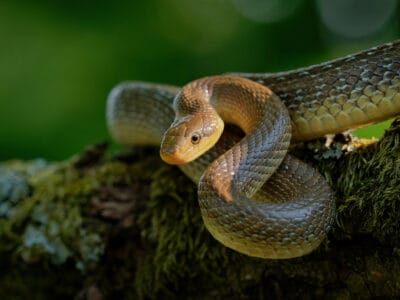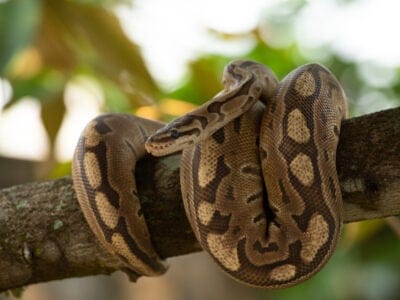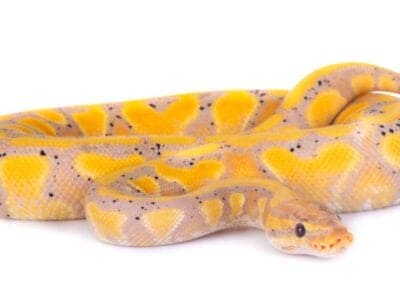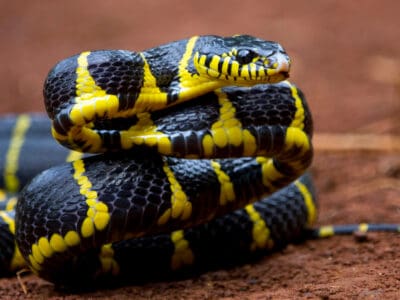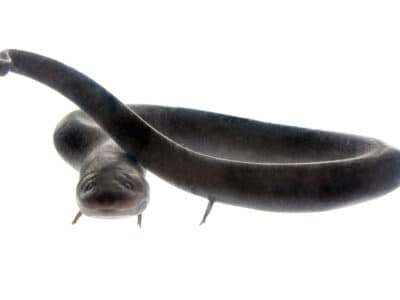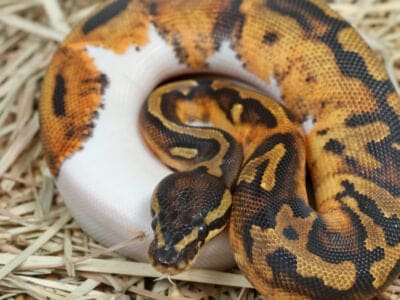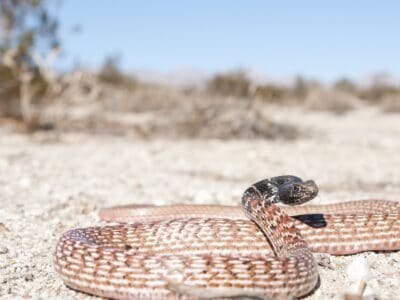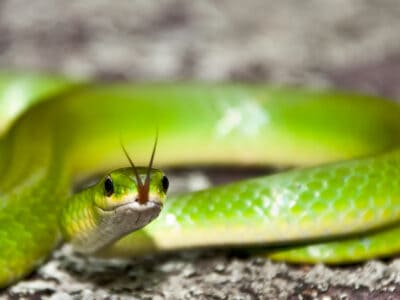How many types of snakes are there? It’s hard to quantify with one final answer because it changes. The short answer is that currently, there are over 4,000 snake species on Earth, grouped into about 30 different families. Some families are further grouped into one of seven superfamilies. As scientists discover more types of snakes in secret corners of the earth and genetic research helps us classify them more accurately, the number is adjusted accordingly.
But to better understand what we’re talking about when we mention “snakes,” let’s dig into what a snake is and is not.
What is a Snake?
As part of the order Squamata, suborder Serpentes, snakes have scales that protect them from losing too much moisture in dry climates, help them gather water to drink, and serve as an additional protective layer between their skin and the environment.
Snakes are among nature’s most interesting animals. They have no functional legs but move silently through the brush faster than you expect a legless creature to move. Moreover, these animals are surprisingly fast! Some can move up to 12 miles per hour in sprints.
And eyelids? They’re missing those too. Instead, they have a transparent scale over their eyes. So, they never have to blink, and it gets replaced when they shed.
Shedding is another thing that snakes and lizards experience every so often. Their scales get beat up because they don’t constantly regenerate like a mammal. So, they periodically shed their skin and start fresh. In most lizards, it peels in pieces like a person with a sunburn. However, snakes usually shed in one piece, starting at the head!
We group them according to different features like venom, body type, number and type of scales, head type, etc. From there, the superfamilies break down into families and subfamilies. While we can’t discuss every snake in one article, we can cover a few of the most dangerous, common, and unique snakes. So let’s get started!
Most Common Types of Snakes
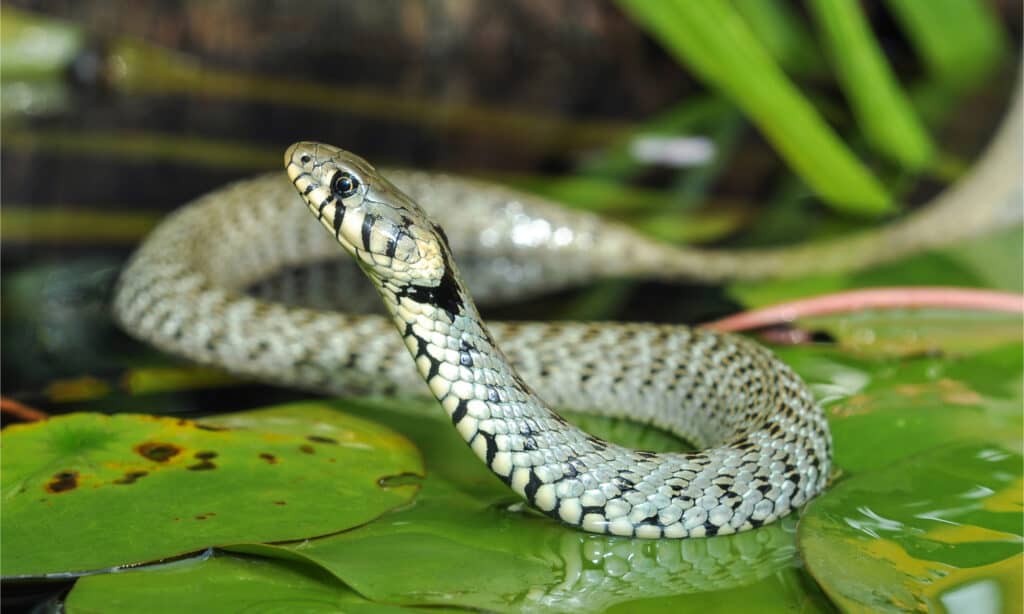
Grass snakes
(Natrix natrix)are extremely common in Europe.
©Dr.Pixel/Shutterstock.com
Worldwide, the most common snakes are usually nonvenomous because there are more nonvenomous snake species — it’s simple numbers!
North America’s most common snakes are those in the Thamnophis genus — garter and ribbon snakes. They’re almost as cold-adapted as the venomous European adder and often brumate together in massive groups. A few areas in western Canada have immense brumation dens where thousands of garter snakes spend the coldest months before coming out by the thousands to breed and feed.
In Europe, grass snakes (Natrix natrix) and European adders (Vipera berus) are widespread — grass snakes are harmless, but the adder is venomous. The adder is the only snake known to live above the Arctic Circle, and some females only breed every five years.
Once you arrive in Africa, however, you’re more likely to see venomous snakes — even though, like other regions, there aren’t as many venomous snake species. This continent has more sightings of dangerous puff adders than any other species. However, these highly venomous vipers spend most of their time in camouflage mode and only hiss or strike when their position is already compromised.
Asia and Southeast Asia have hundreds of snake species. However, the most common snakes are the harmless whipsnakes and ratsnakes. The region also has numerous venomous snakes, including several vipers, cobras, and kraits.
Australia’s most common snake is the nonvenomous carpet python, followed closely by the venomous red-bellied black snake.
Most Venomous Snakes in the World
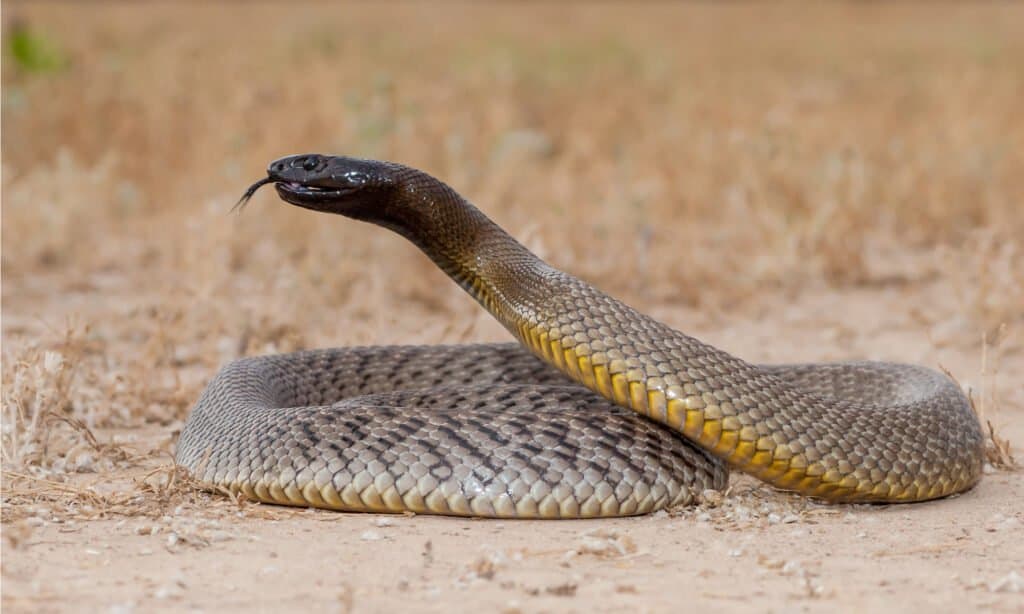
Inland taipan snakes are extremely venomous and not as shy as other snakes.
©Ken Griffiths/Shutterstock.com
Scared yet? Don’t be.
Only about 600 have any venom at all, and of those, only about 200 can kill a person. That’s right, of the 4,000-plus snakes around the world, only about 200 can kill you. Now, you might be concerned if you live where some of the more dangerous snakes also live. However, most snakes try to avoid people. So, the real lesson is how to identify and avoid the snakes.
Most dangerously venomous snakes worldwide are those in the Elapidae and Viperidae families. Still, there are also a few in other families.
Venomous snakes have fangs attached to venom glands. Some fangs are small but hollow and fixed in the front of the mouth; some are primitive and only have a groove for the venom to flow along. Still others, like the vipers, have incredibly advanced venom delivery systems with long, hollow, hinged fangs that inject massive quantities of venom.
Elapids
Among the most dangerous snakes, the elapids are a diverse family with members across most of the temperate world. However, some areas, like Australia, have more than their fair share of deadly snakes. Here, you’ll find several deadliest snakes in the world, like the eastern brownsnake (unrelated to the harmless Dekay’s brownsnake in North America), inland taipan, and four death adders — they’re all elapids!

DeKay’s brownsnake preys mostly on soft-bodies animals such as slugs and
earthworms
.
©Paul Reeves Photography/Shutterstock.com
Cobras
Originally called cobras di cappelo by Portuguese sailors, several hooded elapids get lumped together as cobras. They’re widespread and live in Africa, the Indian subcontinent, Asia, and Southeast Asia. These hooded serpents are dangerous, and the Indian cobra is one of the Big Four of Indian snakebite infamy. There are over 20 species of these deadly snakes.
Giant Spitting Cobra — The Biggest Spitting Cobra
Yes, there’s a giant cobra that can accurately spit venom at you. Also called Ashe’s spitting cobra (Naja ashei), this snake is big and burly. It can grow up to eight and a half feet long and spit its venom up to eight feet. This cobra is closely related to forest cobras and Mozambique spitting cobras.
Giant spitting cobras are native to eastern Africa, and do not hesitate to spew venom! They’re known for spitting at anything they perceive as a threat for a long time.

Many cobras, like this Mozambique spitting cobra, can spit venom with terrific aim.
©Eugene Troskie/Shutterstock.com
King Cobra — The Longest Venomous Snake Isn’t a True Cobra
Another huge venomous snake, the king cobra, is in a class of its own. Really! It’s the only member of its genus, Ophiophagus. While it used to be included in the Naja genus with the other cobras, recent research showed that it didn’t belong there.
King cobras are the longest venomous snakes in the world. The record was just a little over 18 feet long. In collections, they’re known for being far more intelligent than other snakes and being more likely to attempt an escape.
Native to parts of India and much of Southeast Asia, king cobras get their name from the fact that they eat other snakes. Big snakes, little snakes, they don’t care. They’re also the only snake to build a nest for their eggs and guard them until hatching.

King cobras are the longest venomous snake in the world and can reach 18 feet long.
©RealityImages/Shutterstock.com
Coral Snakes
There are coral snakes in many regions worldwide. Scientists separate them by the New World coral snakes and Old World coral snakes. They’re all highly venomous, and only those in North America mostly follow the old rhyme “Red touch yellow, kill a fellow; red touch black, venom lack” and its variants. Herpetologists discourage its use because the rhyme fails when you find a snake with an aberrant (color mutation) pattern.
In any case, coral snakes come in many colors and patterns, from all black with a blue head to the cliché red, yellow, and black. Most species are relatively small, don’t exceed three feet long, and aren’t inclined to bite. However, with hundreds of species worldwide, you’ll find some that are only too happy to take a bite.
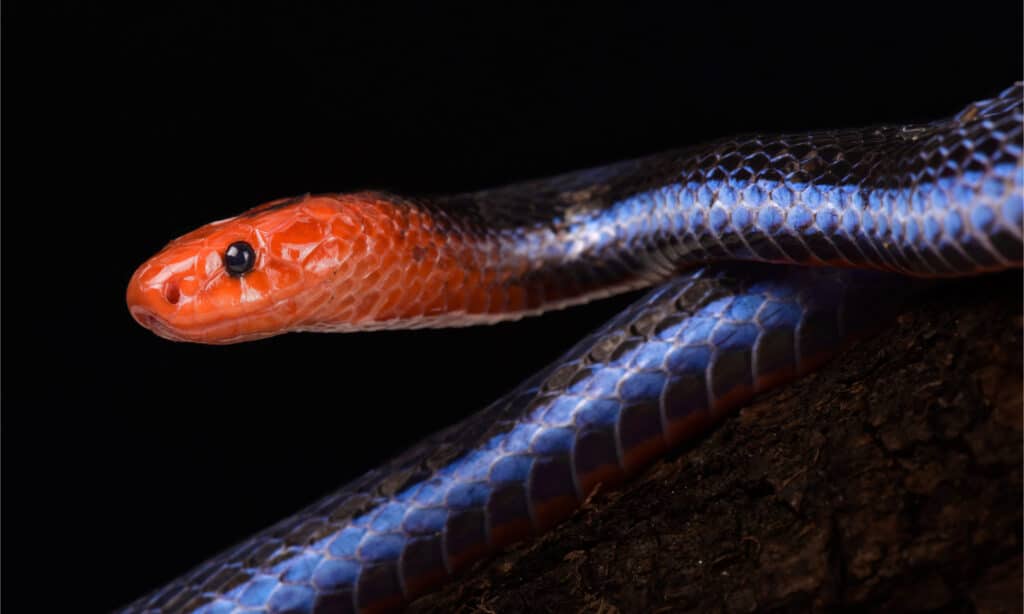
Blue Malaysian coral snakes are beautiful but deadly.
©reptiles4all/Shutterstock.com
Stiletto Snakes (Atractaspis spp.) — Weirdest Fangs
Part of a subfamily that’s related to cobras and yet not related, stiletto snakes have been moved repeatedly from one family to another. They’re currently the nominate subfamily in the Atractaspidinae family and will probably be there for a while.
These dangerous snakes can’t be handled safely. It doesn’t matter how you hold them. They’ve got fangs that they move independently to stick out of the side of their mouth and stab sideways. According to the African Snakebite Institute, stiletto snakes (Atractaspis bibronii) are responsible for the third-most serious snakebites in South Africa, after the Mozambique spitting cobra and puff adder.
Stiletto snakes are small and fossorial and try to avoid people — they rarely measure more than 18 inches. But, because they resemble harmless snakes, people pick them up with their hands and get stabbed because these snakes don’t hesitate to use their freakish fangs against any threat.
Unfortunately, there is no antivenom for stiletto snake venom. Happily, there also aren’t any recorded deaths, but many victims lose digits.

The venomous Bibron’s Stiletto Snake. The entire body of the snake features a range of dark brown to black colors.
©NickEvansKZN/Shutterstock.com
Types of Vipers — True Vipers and Pit Vipers (Viperinae and Crotalinae)
The Viperidae family holds some of the world’s most dangerous snakes. If you live anywhere they’re found, you need to know what types of venomous snakes occur and how to tell them from harmless snakes. For example, two of India’s Big Four venomous snakes are the saw-scaled viper and Russel’s viper. These two vipers are responsible for more snakebite deaths than any other vipers combined. The high fatality rate is partly because of their venom’s toxicity; but also partly because medical care in the countries they inhabit isn’t as easily accessible.
European Adder (Vipera berus) — Most Common Venomous Snake in Europe
The most cold-tolerant snake known to science, the common European adder is the only snake to live north of the Arctic Circle. It’s also venomous — fortunately, there are very few deaths on record, and antivenom (when it’s needed) is effective.
You’ll know this smallish viper by its distinctive zig-zag pattern on its back. There are a few melanistic snakes that become almost black — they’re almost always female. Because of the cold environments they inhabit, these snakes never get all that large, nor do they breed all that often. Some females are as old as seven or eight before they breed for the first time, and often go five years between breeding cycles.
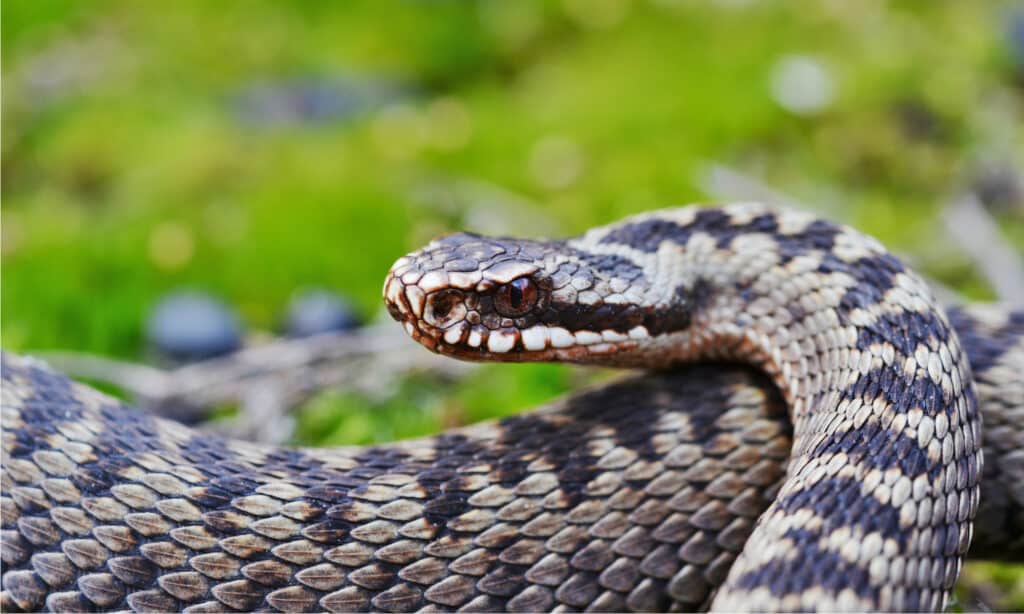
Common European Adder (Vipera berus) is the only snake to live north of the Arctic Circle.
©Holm94/Shutterstock.com
Bushmaster (Lachesis muta) — Longest Venomous Snake in the New World
Among the most dangerous snakes in South America, the bushmaster’s scientific name means silent death. In fairness, it’s not prone to biting, but when it does bite, it does so repeatedly. However, because it’s a pit viper in the Crotalinae subfamily with its close cousins the rattlesnakes, the “silent death” moniker fits — it has no rattle and death from this snake is more common than others.
Also, in an apparent bid to be the biggest and the baddest of all the pit vipers, it can reach 12 feet long, although eight is more frequent; making the South American bushmaster the longest venomous snake in the New World. Like all other pit vipers, it has heat-sensing pits in its loreal scales, located between its nostril and its eye.
However, this snake’s rebellious streak doesn’t end with its size. It also decided that giving birth was too much trouble and instead lays eggs — unlike nearly every other pit viper.
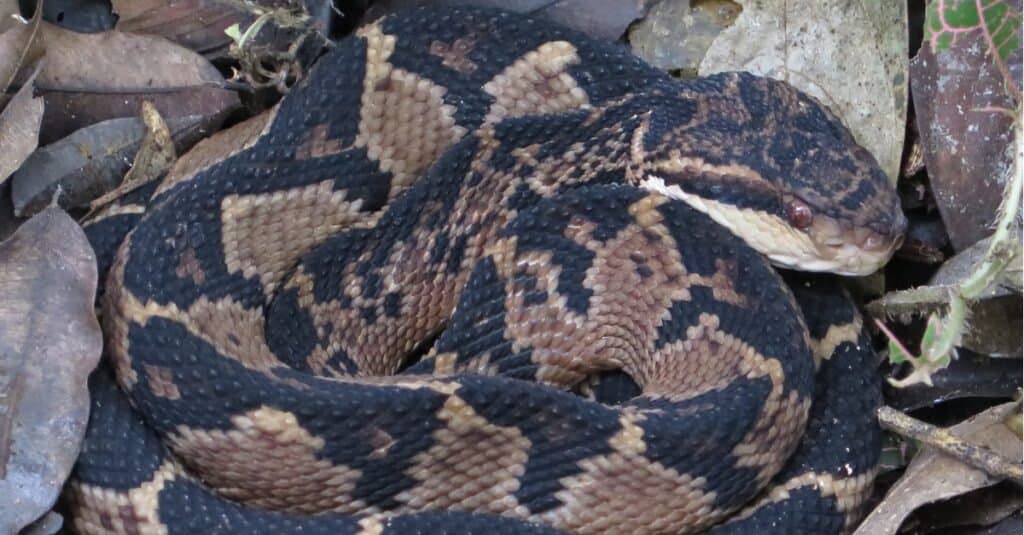
The scales of a bushmaster snake have a smoother texture toward the head.
©iStock.com/Luis Espin
Typical Snakes (Colubridae)
One thing that you need to know about snakes is that approximately one-half of the world’s snakes don’t fit neatly into their own groups like boas and pythons. Instead, those snakes find themselves in the Colubridae family. Here, you’ll find everything from deadly boomslangs to harmless kingsnakes and water snakes.
Types of Water Snakes
When you say “water snake,” what comes to mind? It likely depends on where you live! For example, if you live in the eastern United States, you may think of banded watersnakes and cottonmouths. However, if you’re in Southeast Asia, perhaps a tentacled snake comes to mind instead.
Water snakes are in nearly as many regions as their dry-land-loving counterparts. Some never come to land and others are only semiaquatic and split their time between the land and the water.
Most of the world’s harmless water snakes are in the Colubridae subfamily of Natricinae. That’s where you’ll find grass snakes, garter snakes, water snakes, and many others.
Keelbacks — Poisonous and Venomous
The keelbacks of the Rhabdophis genus are an interesting snake group. They’re part of the Natricinae subfamily, but aren’t terribly aquatic. Some are venomous — there are a few records of dangerous envenomations with the Japanese keelbacks. However, most are harmless to people.
But some of these snakes are indeed poisonous — not just venomous. It’s rare in the snake world, and there’s discussion about North American hognose snakes also being poisonous. However, it’s not definitive. Keelbacks become poisonous because they absorb the toxins from their toad-prey and are able to circulate it through their bodies.
The difference between poisonous and venomous is specific. It’s not subtle. Here it is: Poison is a substance that makes you sick or kills you when you ingest or absorb it. Venom has to be injected for it to have any effect, but you can usually eat it without harm.
Keelbacks are semiaquatic toad eaters native to Southeast Asia.
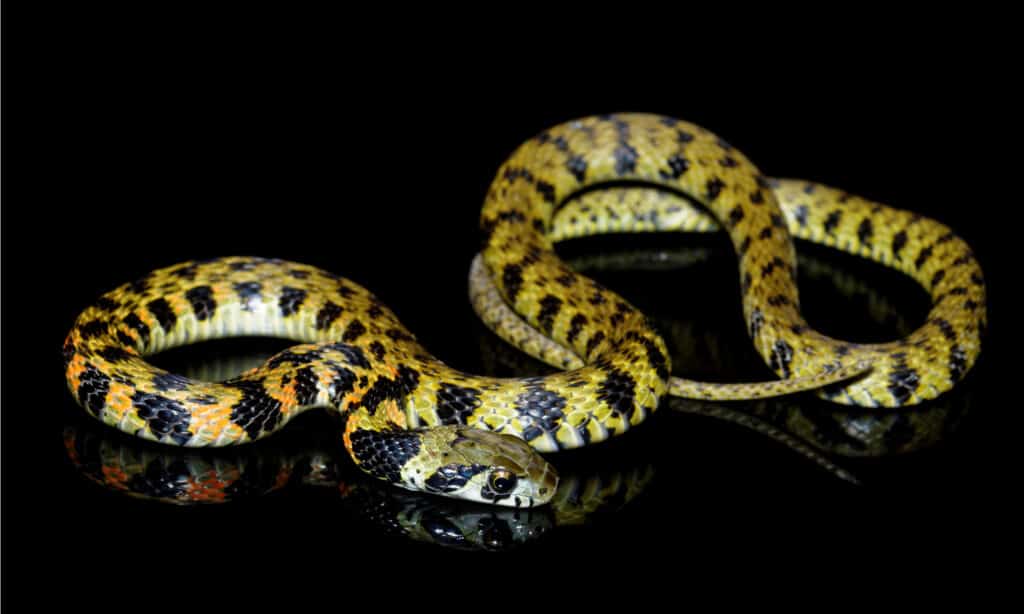
Asian
tiger
keelback (Rhabdophis tigrinus) is one of very few snakes that is poisonous AND venomous.
©Valt Ahyppo/Shutterstock.com
Water Snakes
In North America, snakes in the Nerodia genus are considered water snakes. Everything else is, well, not. They can be great swimmers and semiaquatic, but they’re still not water snakes.
This genus includes 10 different species plus several subspecies. They’re common in the eastern United States and spend most of their active time in or near permanent water sources. Nerodia water snakes are exceptionally skilled in catching fish and amphibians, their primary food sources.
Typically, these water snakes are heavy-bodied and have keeled scales. They don’t lay eggs but give birth to babies in the summer. These water snakes aren’t venomous but have wicked teeth they use to catch prey. Unfortunately, those same teeth are their primary defense weapon, which water snakes are only too willing to use.

Grass and Garter Snakes
These snakes share many physical similarities but live in entirely different parts of the world.
Natrix genus grass snakes are mainly European, while Thamnophis genus garter snakes are North American.
Both groups (genera) have thin bodies and live in and near water. Their diets are mainly amphibians, but while garter snakes give birth to their babies, grass snakes lay eggs.
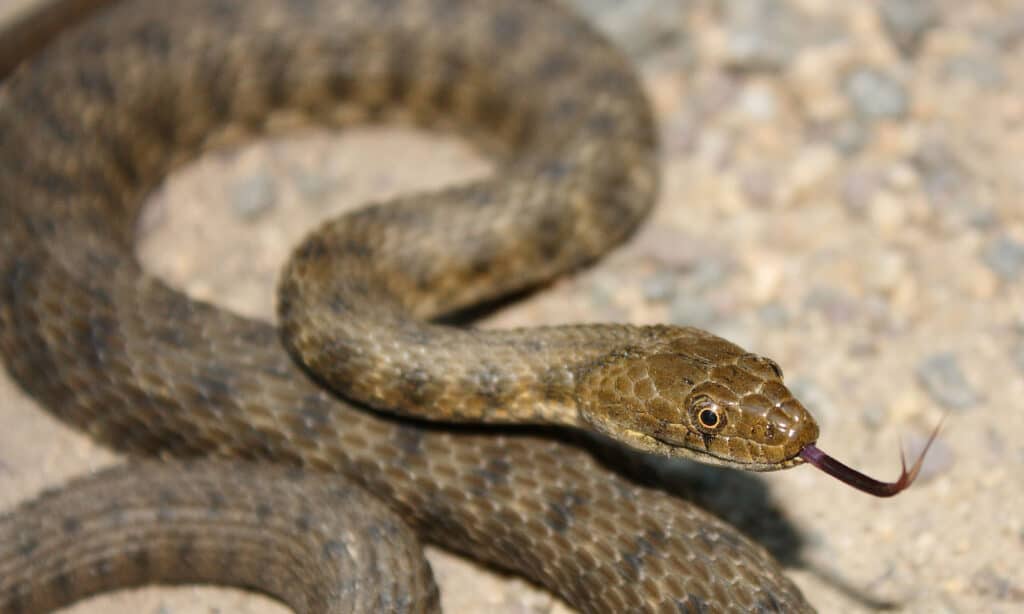
Dice are a type of grass snake native to Eurasia. They’re nonvenomous and semiaquatic.
©iStock.com/Zdenek Macat
Constrictors — Boas and Pythons
Although once lumped into one family, boas and pythons are spread across three families. These snakes are all nonvenomous, and some have vestigial limbs — the remnants of their evolution from lizards.
Boas are mostly confined to the new world and a few locations like Madagascar and pockets of Africa. On the other hand, pythons are widespread across Africa, Asia, Southeast Asia, and Australia. The families include some of the biggest snakes, including the longest and the heaviest species.
Green Anaconda — Heaviest Snake in the World
The title of “Heaviest Snake” goes to the green anaconda (Eunectes murinus). It’s a boa, it’s a watersnake, and it’s enormous. It is the heaviest snake in the world at up to 550 pounds and 20-plus feet long for females.
However, green anacondas aren’t the only anaconda. There are three other species, but they’re all much smaller. Here are the other extant (living) species:
- Bolivian anaconda (E. beniensis)
- Yellow anaconda (E. notaeus)
- Dark spotted anaconda (E. deschauenseei)
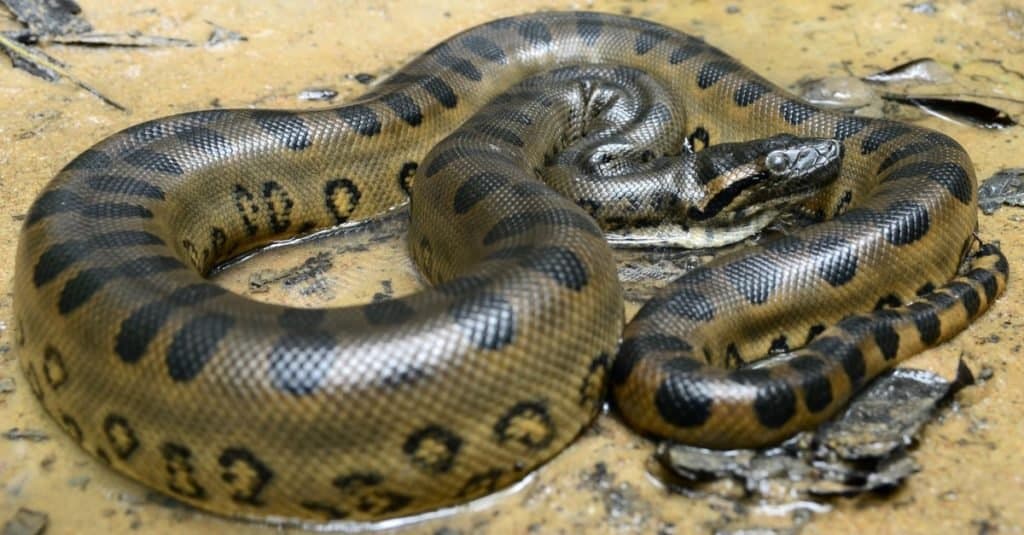
The Green Anaconda give birth to live young, that are about two feet long when they are born.
©Patrick K. Campbell/Shutterstock.com
Reticulated Python — The Longest Snake
Reticulated pythons, or retics as many owners call them, are native to South and Southeast Asia. They’re incredible swimmers and some of the region’s first animals to colonize new volcanic islands. These snakes get their common and scientific name from their color pattern — which has a net-like appearance.
They regularly attain lengths of 20 feet and more. The record was said to be 28 feet long, but there are questions about how the measurements were performed. We know the longest reliable retic is one named Medusa, who lives with her owner in Kansas City, Missouri.

This reticulated python shows the dorsal line beginning right behind its nose, and the net-like appearance of its markings.
©fivespots/Shutterstock.com
Smallest Boas — Sort of
Technically, the boas in the Tropidophiidae family aren’t truly boas, but they look like boas — so that’s what we call them. The exciting thing about these tiny boa-like snakes is that a new-to-science species was described in 2022.
Tropidophis cacuangoae is native to Ecuador, a location with no others in the genus, and the individuals they found were only a foot long!
A gross but interesting fact is that they curl up into a ball and bleed from their eyes when threatened. When the threat leaves, they uncurl and slither away like nothing ever happened.
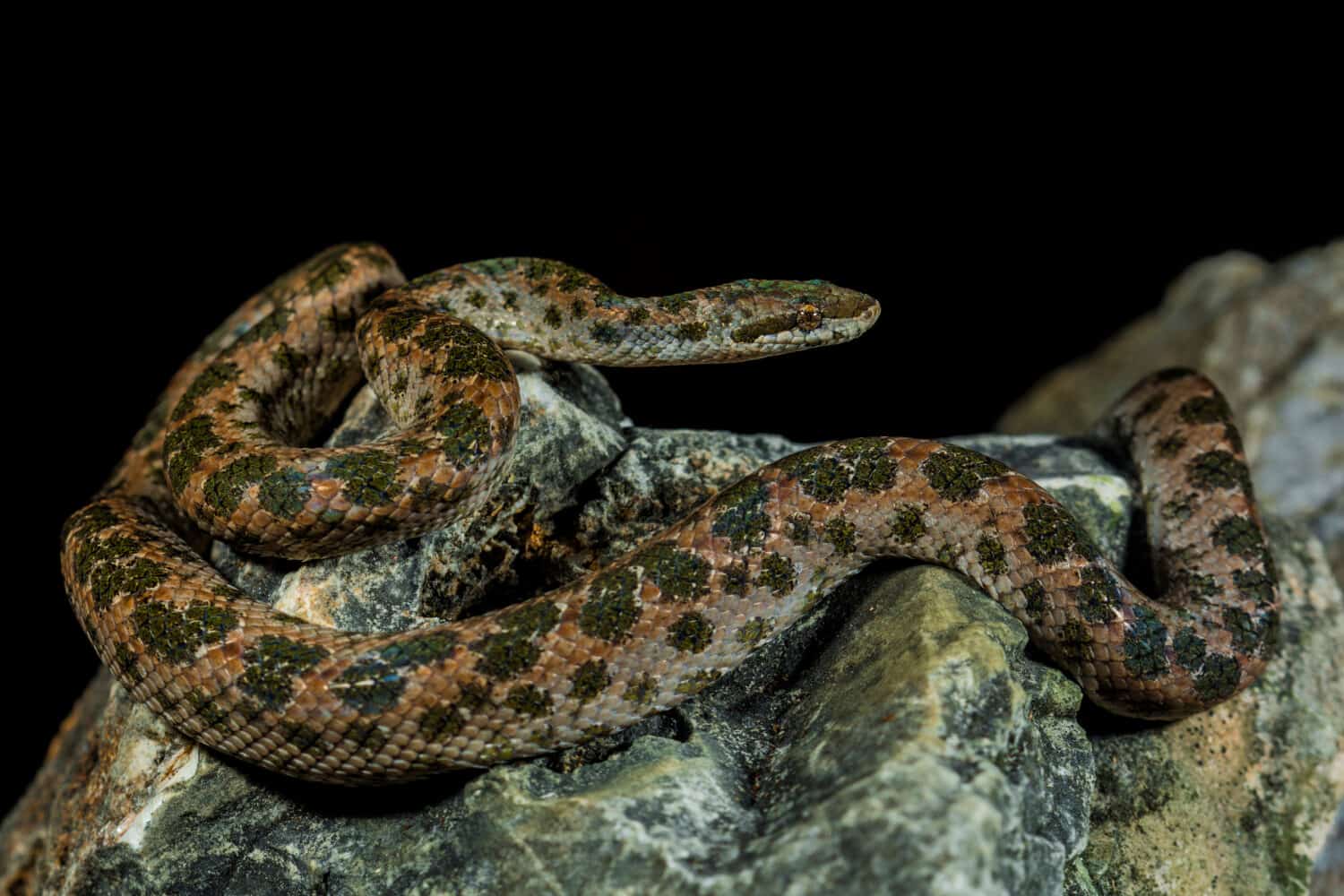
Like the newly discovered
Trophiophis cacuangoae,the Haitian dwarf boa isn’t a boa in the truest sense, but they look like tiny boas.
©Vampflack/Shutterstock.com
Weird Snakes — Tentacled, Flying, and Elephant Trunk Snakes
No matter where they’re grouped, some snakes are just weird. Quite a few snakes adapted to unusual circumstances with equally unique solutions. Although most technically belong to the Colubridae family, it’s hard to see that when they’re so different!
Flying Snakes (Chrysopelea spp.)
This colubrid is mildly venomous and not generally considered dangerous to people. However, despite its obvious lack of wings, it glides better than a flying squirrel! Found mainly in Southeast Asia, flying snakes in the Chrysopelea genus form a type of wing by flattening their ribs and sucking in their gut as they leap from the trees.

Flying Snakes fly by stretching their ribs out and forming a type of wing.
©reptiles4all/Shutterstock.com
Elephant Trunk Snakes (Acrochordidae)
Their name really says it all. Snakes in this family have loose, baggy skin that looks oddly similar to an elephant trunk — or a snake with skin two sizes too big. These snakes are completely aquatic and don’t have wide belly scales that allow other snakes to move along the ground.
Instead, elephant trunk snakes have tiny pyramid-shaped scales that feel rough to the touch, which is why they’re also called Javan file snakes. They eat mainly fish and other small animals in the water and are native to Southeast Asia.
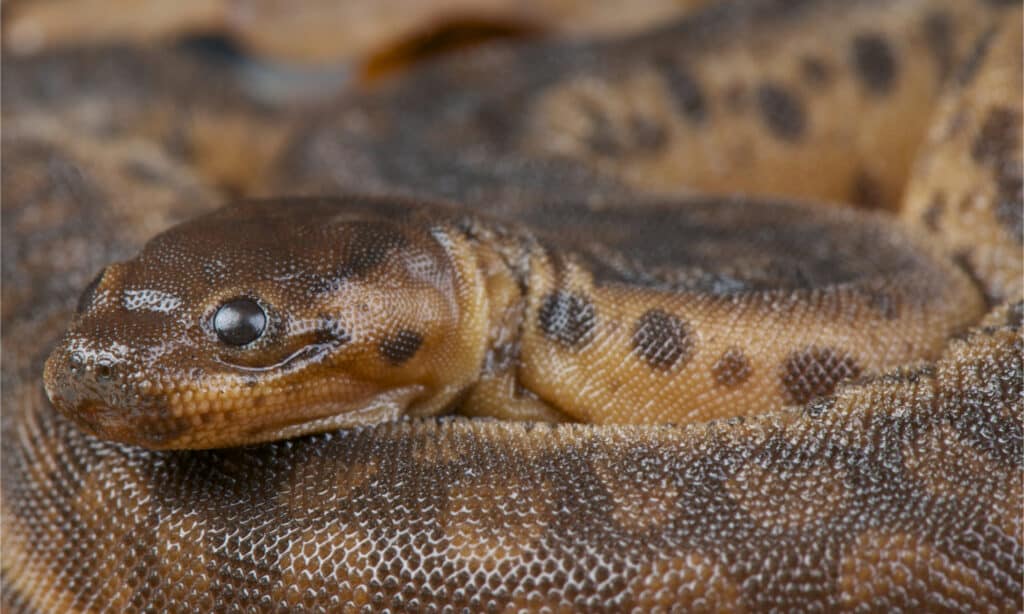
Elephant trunk snakes are fully aquatic and don’t have the wide belly scales that allow other snakes to move along solid ground.
©reptiles4all/Shutterstock.com
Tentacle Snakes (Erpaton tentaculum)
Another fully aquatic species, tentacled snakes spend their entire lives underwater — even their babies are born underwater. They’re so well adapted that they even look like moss-covered branches. Tentacle snakes are native to Cambodia, Vietnam, and Thailand.
They’re only a couple of feet long and have tentacles that come out of their snout. Unlike an octopus, tentacle snakes can’t grab things with them, but some scientists think they could be an extension of their senses. These snakes have an uncanny ability to know exactly where a fish’s head is going to be and strikes there instead of where it is at the moment.
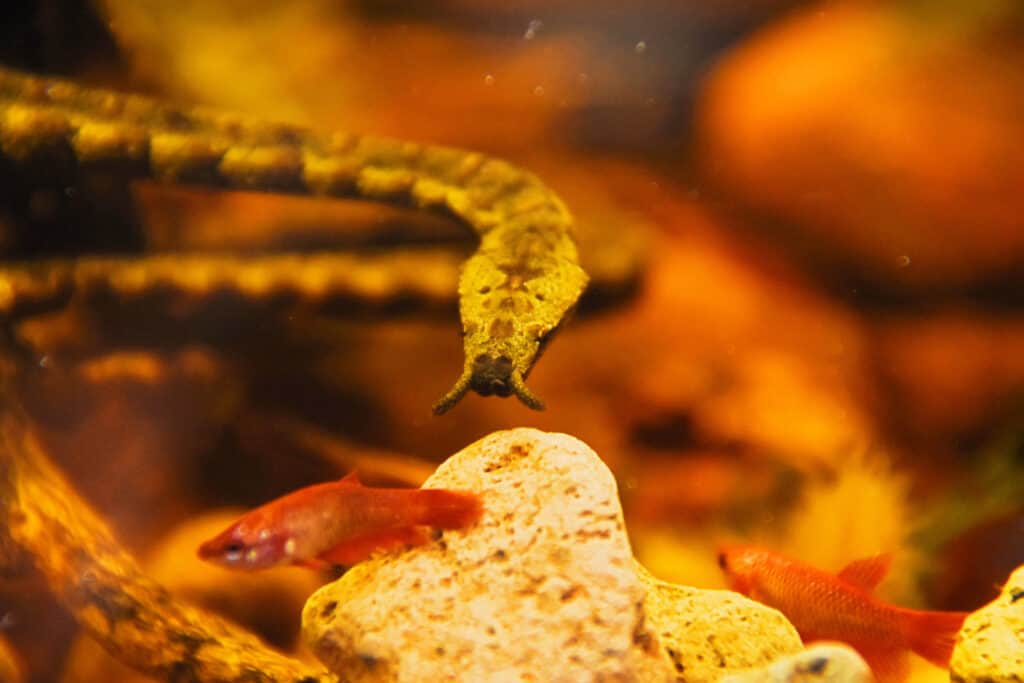
In zoos and aquariums, keepers generally feed goldfish to these snakes.
©Keung/Shutterstock.com
Types of Snakes Chart
With over 4,000 snake species worldwide, there is endless variety! Just when you think you’ve seen a lot, you find yet another fascinating snake that you have to know about. Here are some of the coolest, weirdest, or most common types of snakes you need to know about.
| Type of Snake | Where it Lives | Venomous or Dangerous? |
|---|---|---|
| Giant Spitting Cobra | Africa to Southeast Asia | Highly venomous |
| King Cobras | Southeast Asia | Highly venomous |
| New World Coral Snakes | North, Central, & South America | Highly venomous but usually shy |
| Old World Coral Snakes | Mostly Southeast Asia | Extremely venomous |
| Stiletto Snakes | Africa and Arabian Peninsula | Venomous! Many people are bitten by these snakes every year. |
| Common Adder | Europe | Venomous, but most bites aren’t deadly |
| South American Bushmaster | South America | Deadly! |
| Water snakes | Southeastern United States | Harmless but have sharp teeth |
| Grass snakes | Eurasia | Harmless |
| Garter snakes | North America | Harmless but some have mild venom |
| Green anaconda | South America | Not venomous, but their size makes them dangerous to people and pets. |
| Reticulated python | Southeast Asia | Not venomous but can be dangerous to pets and people because of their size. |
| Dwarf boas (Tropidophis spp.) | Central and South America | Harmless, but their bloody eyeball defense is creepy. |
| Flying snakes | Mainly Southeast Asia | Harmless |
| Elephant trunk snake | Southeast Asia | Harmless |
| Tentacle snake | Cambodia, Thailand, and Vietnam | Harmless |
Different Types of Snakes List:
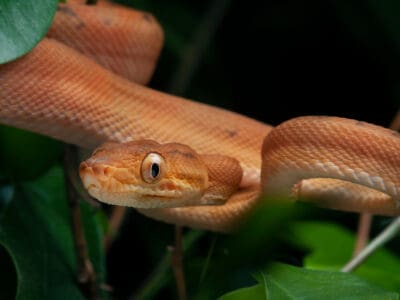
Amazon Tree Boa
Amazon tree boas come in a rainbow of colors.

Anaconda
They are the heaviest snake in the world
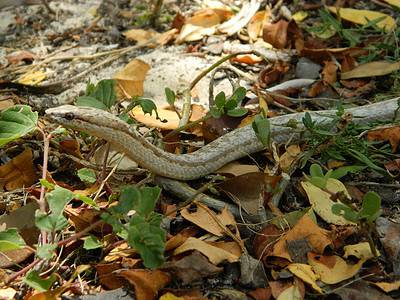
Antiguan Racer Snake
One of the most endangered snakes in the world

Arafura File Snake
These snakes have rough, file-like skin.

Arizona Coral Snake
The Arizona coral snake is among the most venomous snakes of North America.
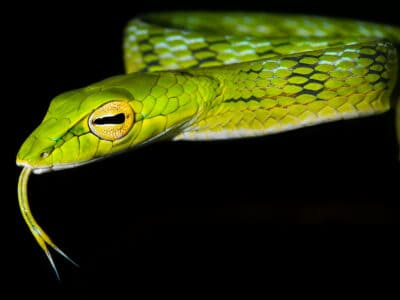
Asian Vine Snake
This snake chews on its victims to release venom.
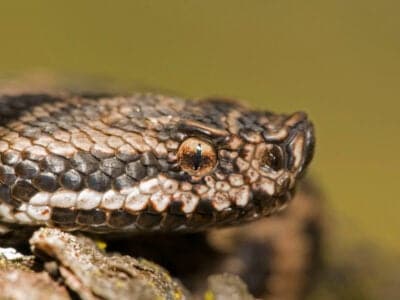
Asp
It was the symbol of royalty in Egypt, and its bite was used for the execution of criminals in Greco-Roman times.
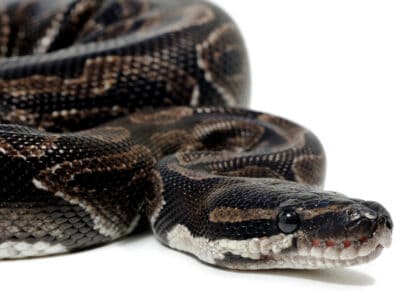
Axanthic Ball Python
Axanthic ball pythons lack yellow pigment in their skin!
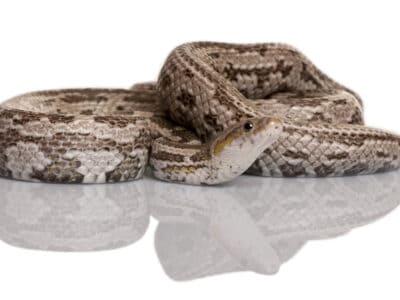
Baird’s Rat Snake
Baird’s rat snake subdues its prey through suffocation.

Banded Krait
What often prevents more people from falling victim is that the banded krait does not always inject venom in a defensive bite. It saves the venom for hunting prey instead.

Banded Water Snake
Some water snakes defend themselves violently.
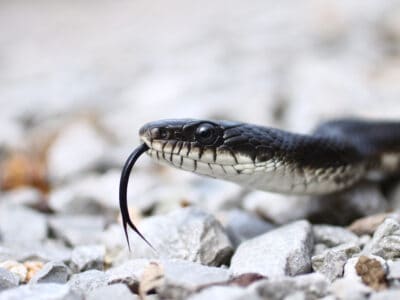
Black Rat Snake
They're also called black pilot snakes due to a myth that they "pilot" venomous snakes to a den where they can go into brumation for the winter.

Blood Python
Blood pythons are so called because of the blood red markings on their skin.
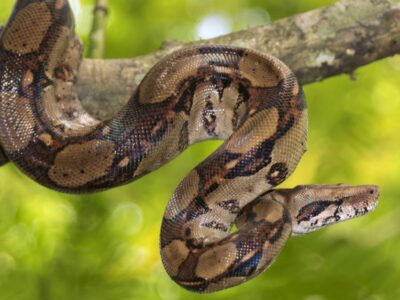
Boas
Boas are considered primitive snakes and still have vestigial legs, called spurs.

Bolivian Anaconda
This is a newly described species! In 2002, scientists realized they had a different species in Bolivia.
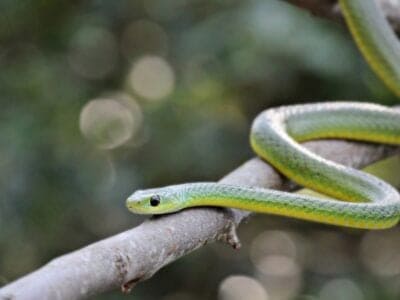
Boomslang
Boomslangs are primarily arboreal but sometimes come to the ground.

Brown Tree Snake
People have reported seeing these snakes in Texas, Oklahoma, and Hawaii, but this has never been proven!
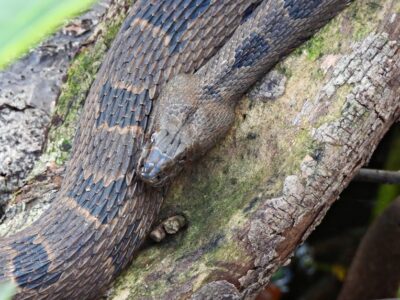
Brown Water Snake
Has more scales than any other water snake on the continent: 27 to 33 rows of dorsal scales!
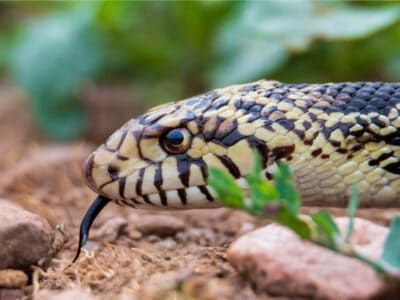
Bullsnake
Considered “The farmer’s friend” because it eats mice and other vermin.

Bush Viper
Bush vipers are predators, sinking their fangs into prey while dangling from a tree limb
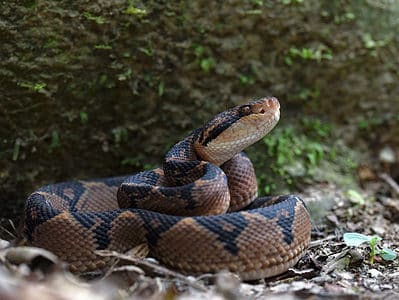
Bushmaster Snake
The bushmaster’s scientific name means “silent death.”
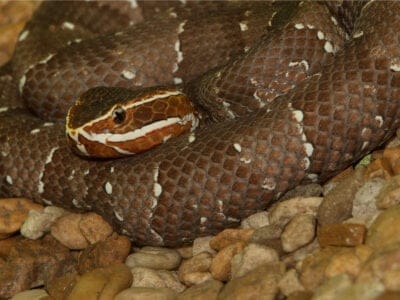
Cantil
Cantils heads are marked with bright white lines on each side of their heads.
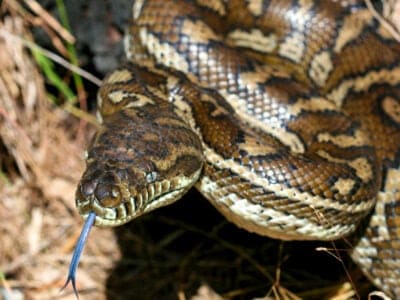
Carpet Python
Carpet pythons are popular pets because of their calm temperament.
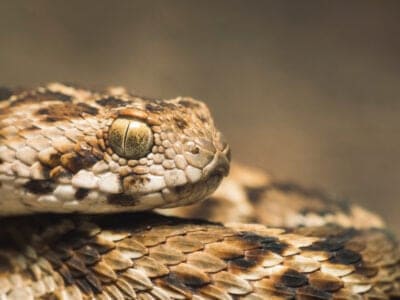
Carpet Viper
The Carpet Viper probably bites and kills more people than any other species of snake.
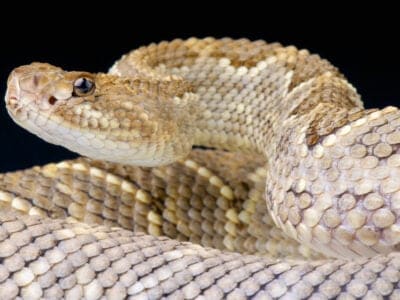
Cascabel
Cascabels rely on their camouflage first, and rattle if that doesn't work.
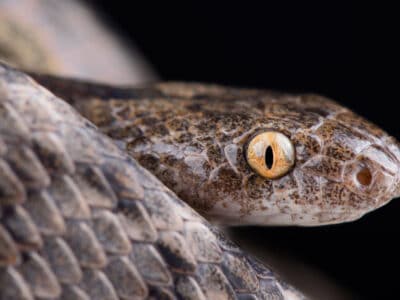
Cat Snake
Some cat snakes have a prehensile tail that helps them climb into trees.
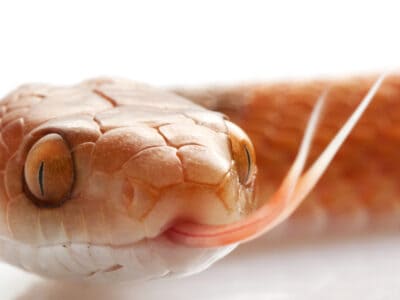
Cat-Eyed Snake
Evidence indicates that females can delay fertilization and store sperm for later years to produce eggs even in the absence of contact with a male!
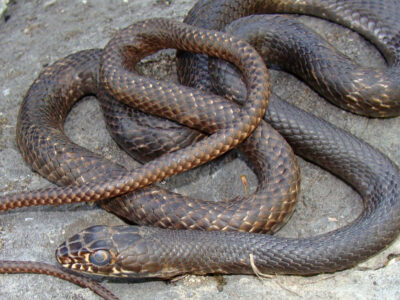
Coachwhip Snake
Coachwhip snakes pose little danger to people

Collett’s Snake
Collett’s snake is beautiful but almost as dangerous as a mulga snake.

Common European Adder
European adders are the only snake that lives above the Arctic Circle.
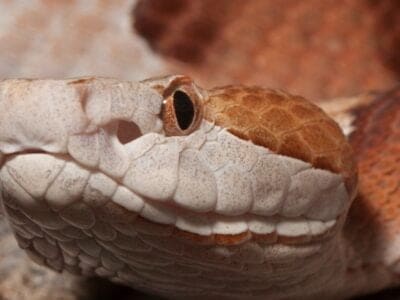
Copperhead
Copperheads get their name, unsurprisingly, from their bronze-hued heads.

Coral Snake
There are over 80 species of coral snake worldwide.
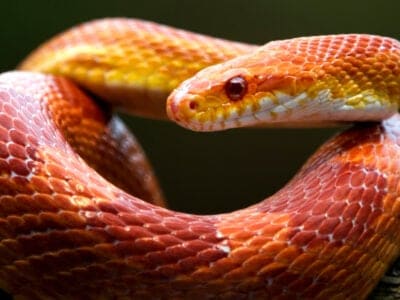
Corn Snake
Corn snakes are partly arboreal and are excellent climbers.
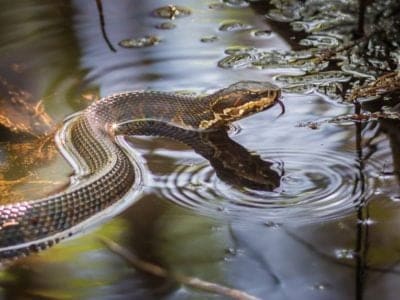
Cottonmouth
The cottonmouth (also known as a water moccasin) is a highly venomous pit viper that spends most of its life near water.
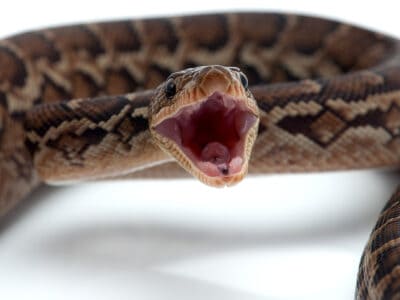
Cuban Boa
One of the only snakes observed using cooperative hunting tactics.

Death Adder
The Death Adder is more closely related to the Cobra than other Australian snakes.

Diamond Python
These pythons live at higher altitudes and further south than any other python species.
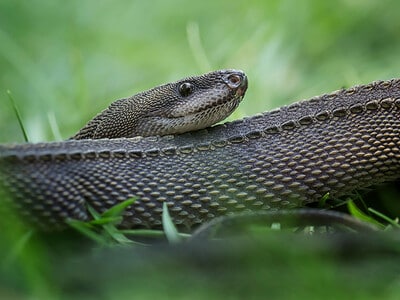
Dragon Snake (Javan Tubercle Snake, Javan Mudsnake)
Sport three rows of raised dorsal scales
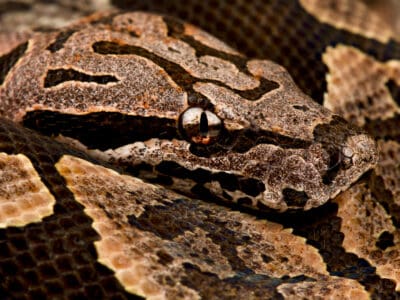
Dumeril’s Boa
Some tribes believe that the snake's skin holds the souls of their ancestors.
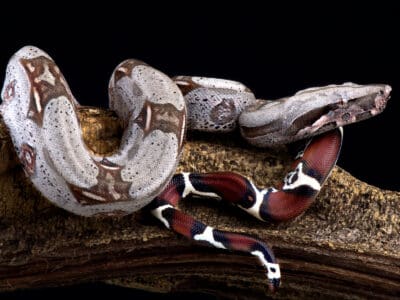
Dwarf Boa
Some species can change color from dark to light, and back again.
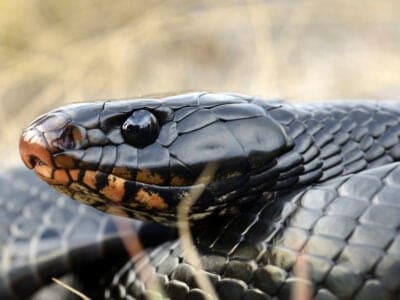
Eastern Indigo Snake
Eastern Indigo snakes regularly chase down and eat rattlesnakes and may be immune to their venom.

Eastern Rat Snake
Rat snakes are medium-to-large, nonvenomous snakes that kill by constriction.

Eastern Tiger Snake
More than 10 percent of eastern tiger snakes are blind in at least one eye.
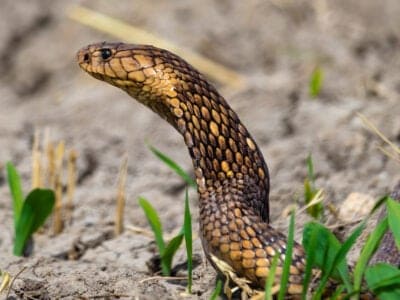
Egyptian Cobra (Egyptian Asp)
The Egyptian cobra is one of the largest cobras in Africa.
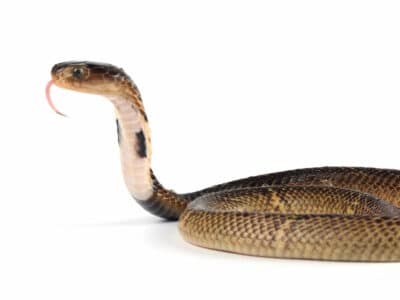
Equatorial Spitting Cobra
Its hood is actually made of many elongated ribs.

False Cobra
When it feels threatened, it mimics a cobra in an attempt to dissuade a potential attacker.
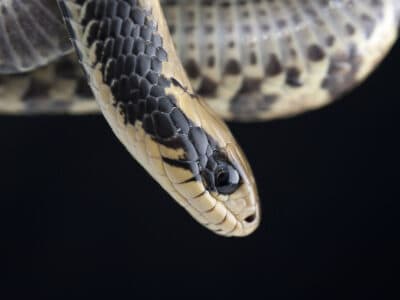
False Water Cobra
There are several color morphs, including lavender!
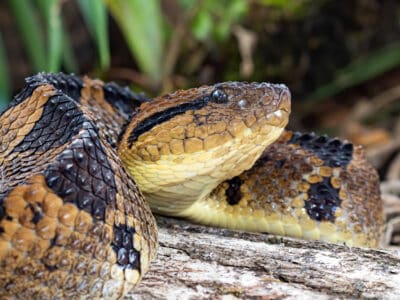
Fer-de-lance Snake
The Most Dangerous Snake in the Americas

Fierce Snake
It can kill multiple humans with the amount of venom it releases in one bite.

Fire Ball Python
The fire ball python morph is known for its rich golden and reddish-brown coloration.
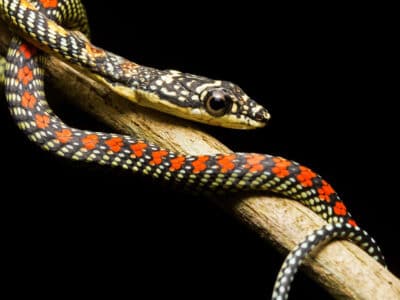
Flying Snake
Flying snakes are the only gliding limbless vertebrates or animals with a backbone!
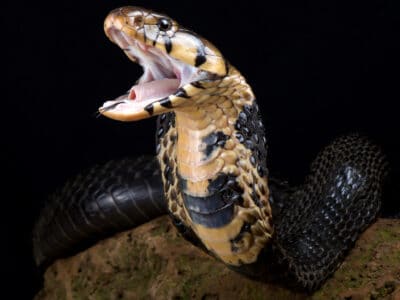
Forest Cobra
There are three different color morphs, which entirely depend on the region that they live in.
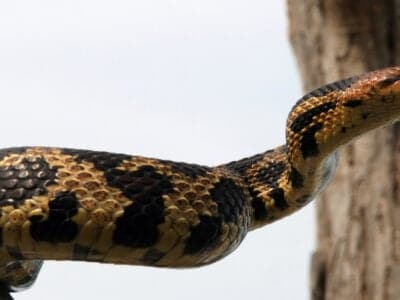
Fox Snakes
In some areas, fox snakes and gopher snakes have crossbred in the wild.
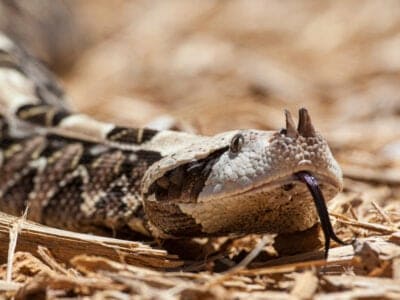
Gaboon Viper
Gaboon vipers are the largest vipers in Africa.
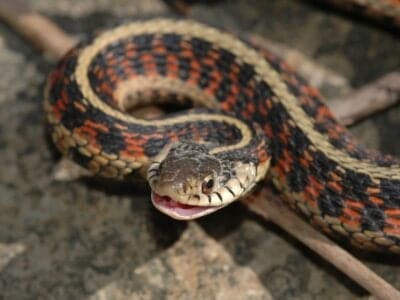
Garter Snake
Female garter snakes give birth to live young rather than laying eggs!

Golden Lancehead
Golden lancehead snakes climb trees to prey on birds.
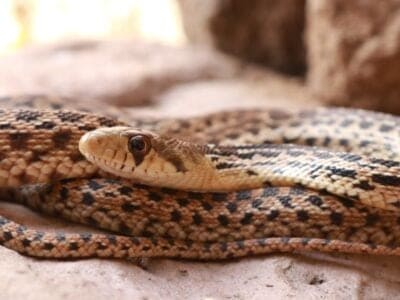
Gopher Snake
Gopher snakes can reach up to 9 feet long.
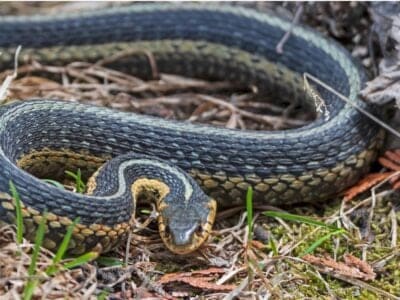
Grass Snake
Use acute hearing to hunt
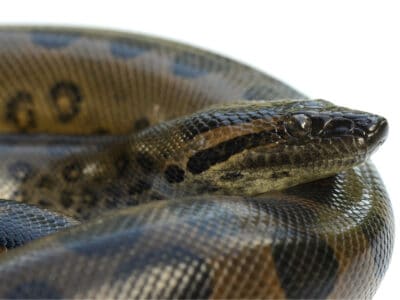
Green Anaconda
Females are often five times longer than males.

Green Snake
There are two types of green snakes: smooth green snakes and rough green snakes
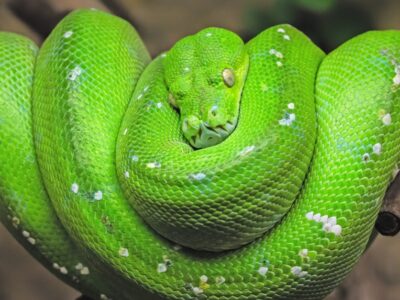
Green Tree Python
Green tree pythons are non-venomous, so to subdue their prey, they have a couple of very unique and highly successful hunting techniques.
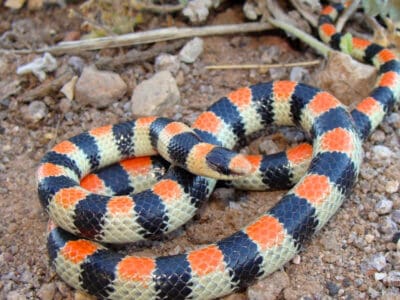
Ground Snake
It’s sometimes called a miter snake due to the marking on its head that looks like a bishop’s miter
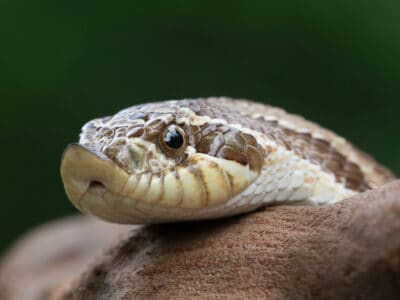
Hognose snake
Prima Donnas of the Snake World
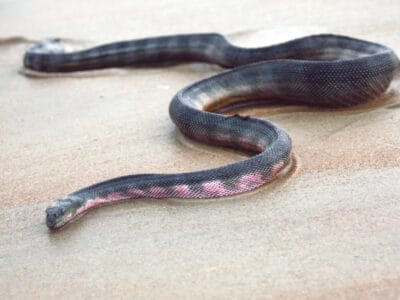
Hook-Nosed Sea Snake
Sea snakes are the most numerous venomous reptiles on Earth.

Horned Adder
Males tend to be more brightly colored than females, and females are significantly bigger than males.
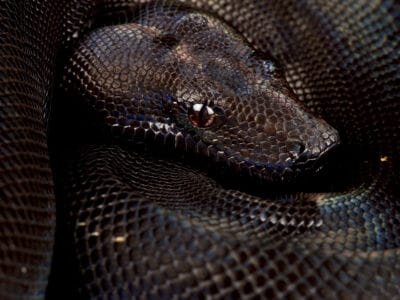
IMG Boa Constrictor
The first IMG boa was born in a litter of anerythristic boas.

Indigo Snake
Indigo snakes use brute force to overpower their prey.
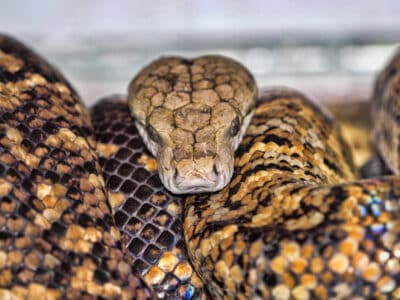
Jamaican Boa
When a Jamaican boa is coiled up, it almost looks like two snakes together because of color pattern.
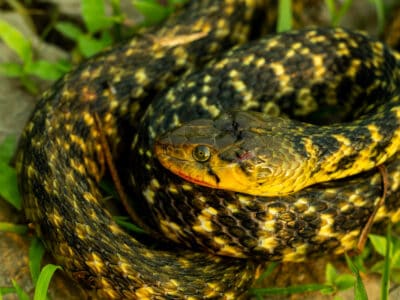
Keelback
The checkered keelback of the east Indies can detach its tail and grow it back, much like a lizard.
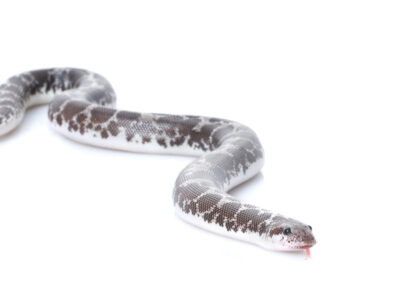
Kenyan Sand Boa
A popular pet snake that comes in dozens of morphs!
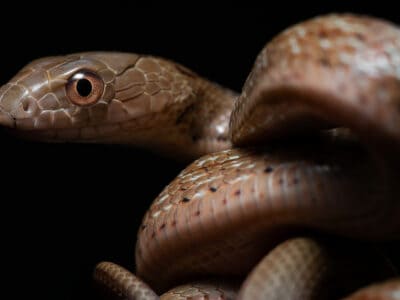
King Rat Snake
When threatened or frightened, the king rat snake has the ability to produce a foul-smelling substance out of self defense.
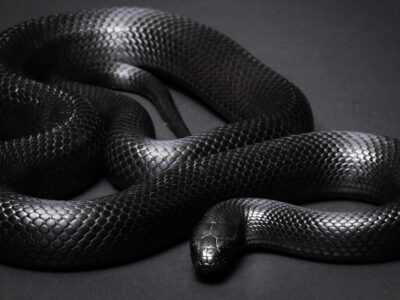
King Snake
King Snakes eat other types of snakes.
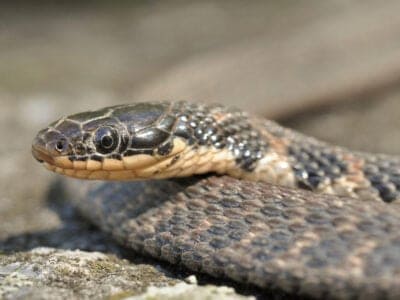
Kirtland’s Snake
It is considered to be the least aquatic of water snakes.

Krait
A painless bite that can result in death.
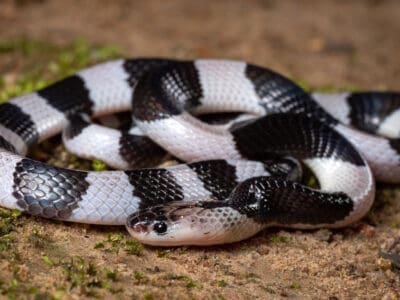
Malayan Krait
It's called the five-step snake because if a person is bitten, they can walk about five steps before dying.
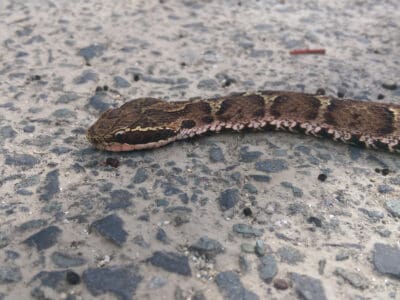
Mamushi Snake
The Mamushi snake, which is also known as the Japanese moccasin or the Japanese pit viper, can grow to be over two feet long.
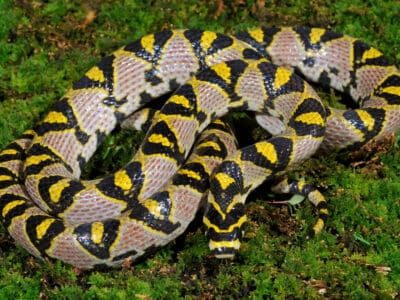
Mandarin Rat Snake
"This docile snake is a popular and long-lived pet - though challenging to care for - with a lifespan of up to 21 years!"

Mangrove Snake
Mangrove snakes have small fangs that are more like enlarged teeth at the back of their jaw.

Massasauga
The name “Massasauga” comes from the Chippewa language, meaning “Great River Mouth”.

Mexican Black Kingsnake
A subspecies of the common kingsnake
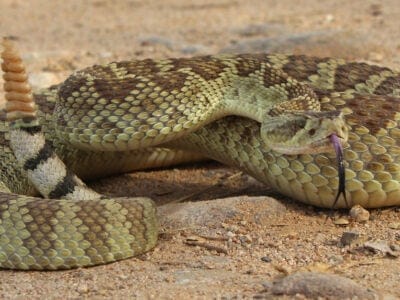
Mojave Rattlesnake
"The Mojave rattlesnake is the most venomous rattlesnake in the world."
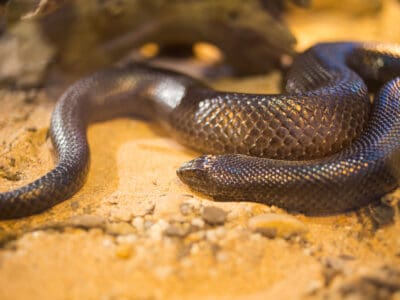
Mole Snake
“The mole snake can reach a length of 6.8 feet”
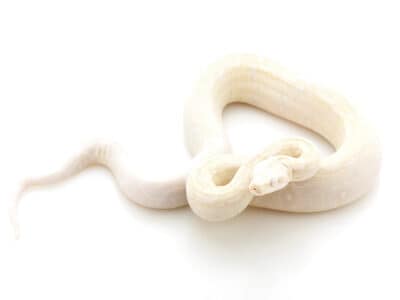
Moonglow Boa
Moonglow boas are the result of mixing three genetic traits.
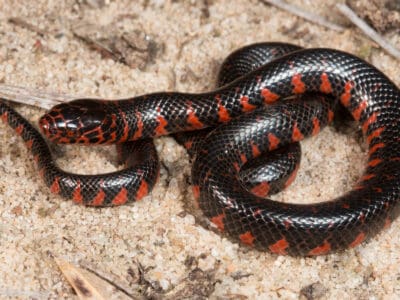
Mud Snake
Mud snakes can lay over 100 eggs at a single time!

Mussurana Snake
Mussurana snakes help keep rodents from overrunning farms.
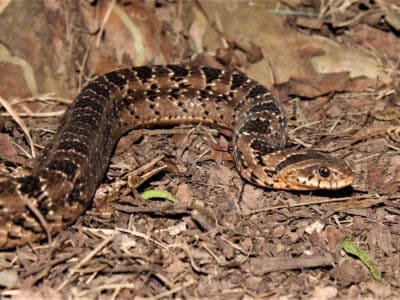
Night Adder
Night adders are small, slender snakes that, despite the name, are actually most active during the day.

Northern Water Snake
Northern watersnakes’ teeth help them nab fish as they swim by.
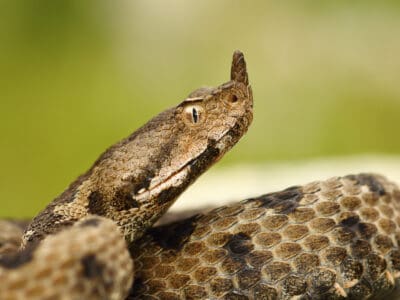
Nose-Horned Viper
The fangs of a nose-horned viper can be as long as half an inch!

Olive Sea Snake
Olive sea snakes can stay underwater for two hours without taking a breath.
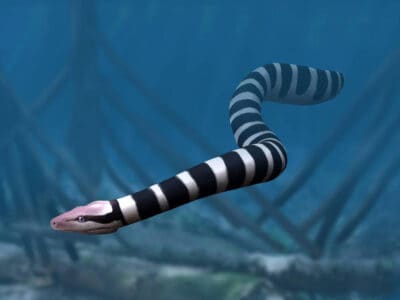
Palaeophis
This snake was as long as a school bus!

Panda Pied Ball Python
The panda pied ball python morph is a combination of the piebald and black pastel traits.
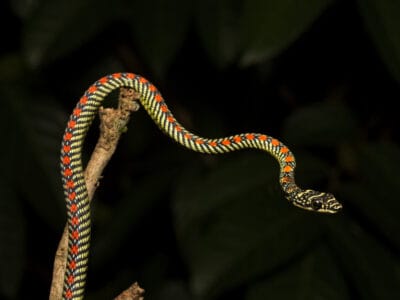
Paradise Flying Snake
Paradise Flying Snakes can glide over 100 yards!
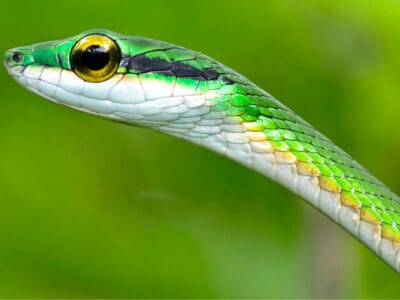
Parrot Snake
The parrot snake shows off with bright green and bronze colors that cover its entire body.
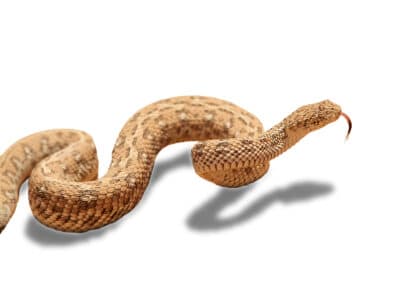
Peringuey’s Adder
Peringuey's adders' eyes are nearly on the tops of their heads!
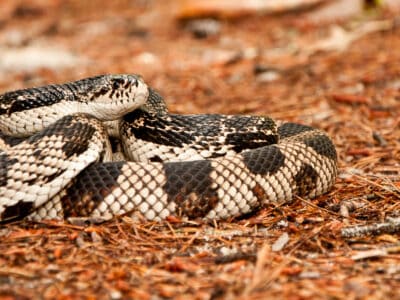
Pine Snake
Pine snakes bluff with the best, trying to scare you away.

Pipe Snake
Some of these snakes flatten their neck and raise their heads to imitate cobras if they’re threatened.
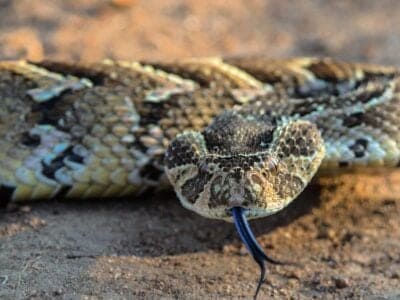
Puff Adder
This large snake is so-named because it will puff up its body to appear bigger than it is when directly threatened by a predator or person.
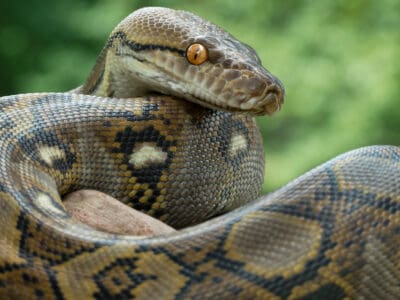
Python
Female pythons lay eggs and defend them until they hatch.
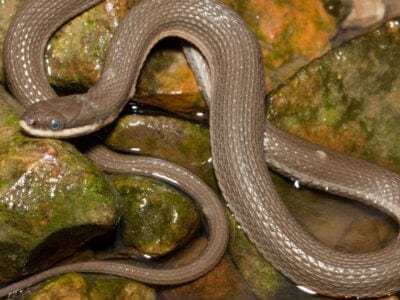
Queen Snake
Queen snakes have armor-like scales on the top of their head
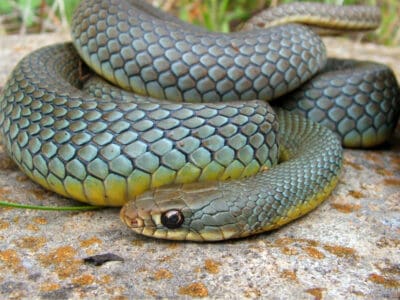
Racer Snake
The racer snake can speed away at up to 3.5 miles per hour
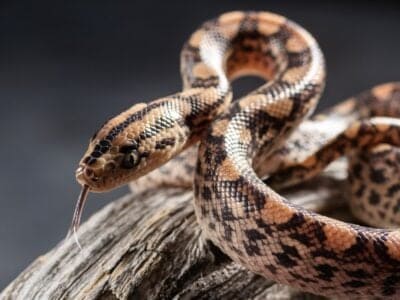
Rainbow Boa
The rainbow boa is named for its iridescent skin that refracts light and creates a rainbow-colored effect.

Rat Snakes
Rat snakes are constrictors from the Colubridae family of snakes.
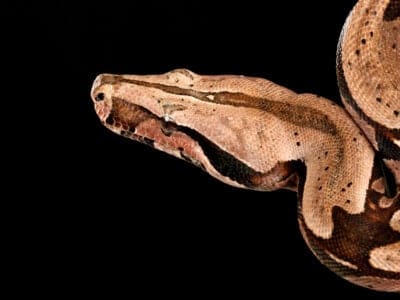
Red Tail Boa (common boa)
Red tailed boas don’t suffocate their prey, they squeeze until the heart stops circulating blood to the brain.
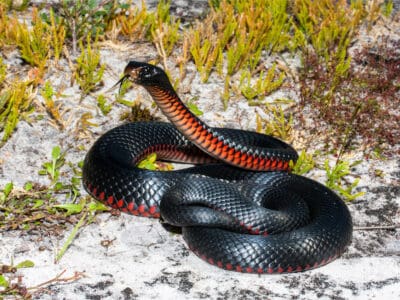
Red-Bellied Black Snake
These snakes are the only ones in the genus Pseudechis to give birth to live offspring.

Rhino Viper
The river jack snake has a gigantic horn-like scale on the tip of its nose.
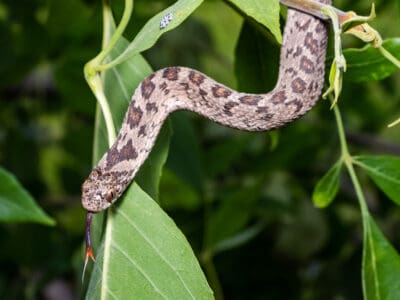
Rhombic Egg-Eater Snake
When birds aren't nesting, these snakes fast
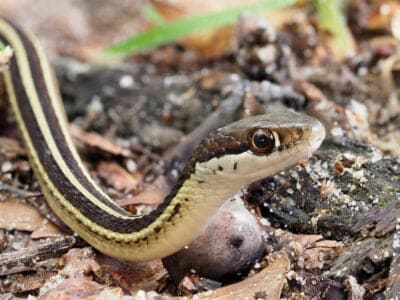
Ribbon Snake
Ribbon snakes love water, but are excellent climbers too.
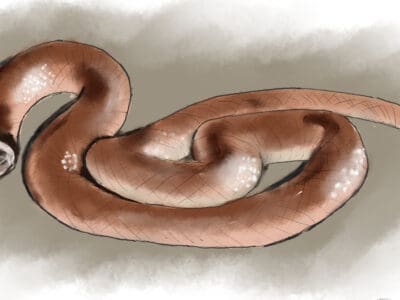
Rim Rock Crowned Snake
Rim rock crowned snakes made news in 2022 when a hiker discovered one of these rare snakes had died while attempting to swallow a centipede!
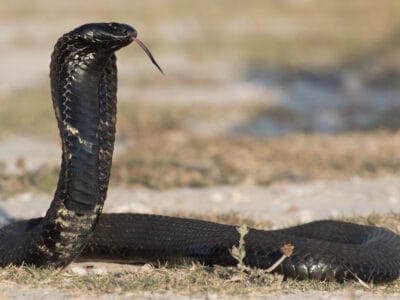
Rinkhals Snake
This snake is known for playing dead as a defense against predators.
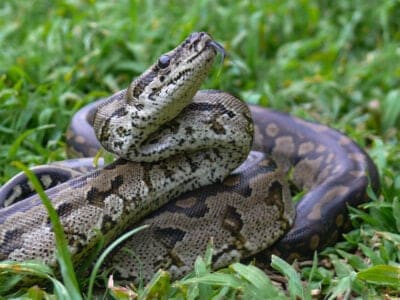
Rock Python
Rock pythons may have crossbred with the escaped Burmese pythons in Florida.
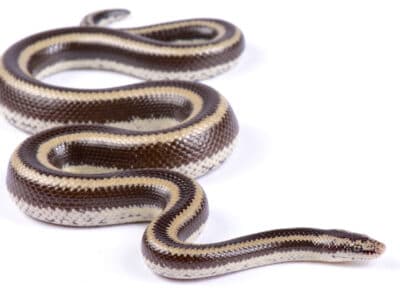
Rosy Boa
One of the few snakes that naturally comes in a rainbow of colors!

Rough Earth Snake
It has a pointed snout that is uses to burrow into moist soil.
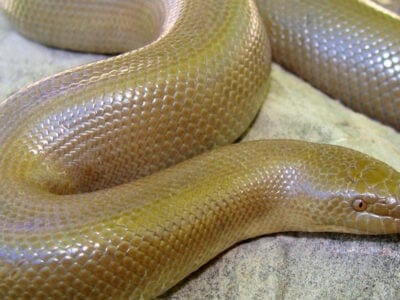
Rubber Boa
Rubber boas are one of North America’s only boa species.

Russel’s Viper
A Russel's viper strike is so forceful it can lift its entire body off the ground.
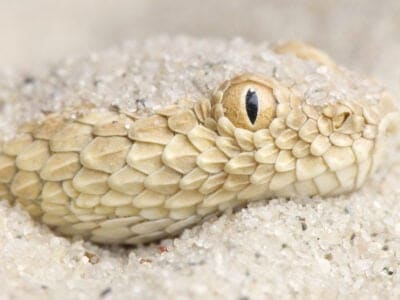
Sand Viper
Sand vipers are nuisance snakes in some areas.
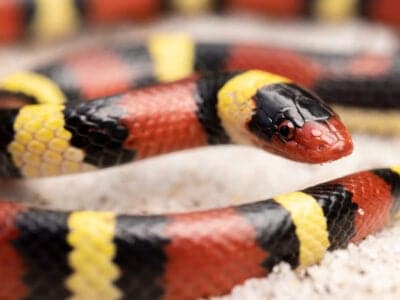
Scarlet Kingsnake
Scarlet kingsnake’s pattern is an example of Batesian mimicry.

Sea Snake
The sea snake is incredibly venomous, even more than a cobra!”
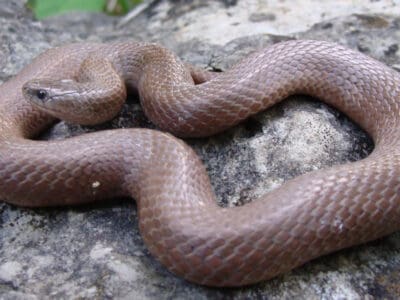
Smooth Earth Snake
Valeria Biddle Blaney (1828-1900) collected the first specimen in Maryland.

Smooth Snake
These snakes are sometimes confused with common adders, but lack the zigzag pattern.

Southern Black Racer
These snakes live underground, beneath piles of leaf litter or in thickets, and they are expert swimmers.

Spider Ball Python
The spider ball python is known for having a head wobble.
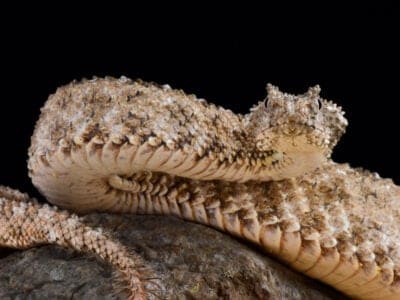
Spider-Tailed Horned Viper
They like to hide in crevices on the sides of cliffs, waiting for prey.
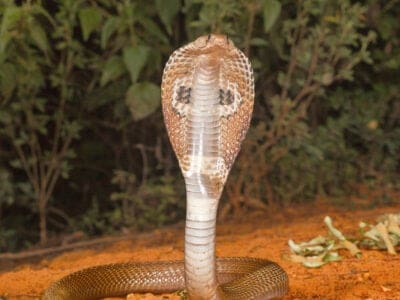
Spitting Cobra
Spitting cobras are types of cobras that can spit venom at predators and prey.
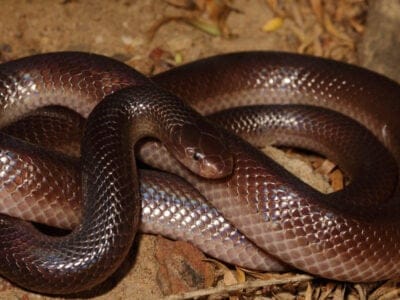
Stiletto Snake
Because of their unique venom delivery system, stiletto snakes are almost impossible to hold safely in the usual way (with fingers behind the head) without being bitten.

Sunbeam Snake
Sunbeam snakes have two lungs instead of just a single lung like most snake species.
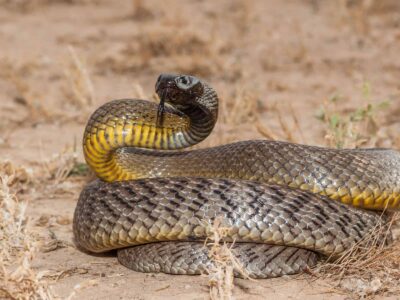
Taipan
The Most Venomous Snakes On Earth

Tasmanian Tiger Snake
The Tasmanian tiger snake gets its name from their banded skin, closely resembling a tiger's stripes.

Tentacled Snake
Their tentacles have nerves that attach directly into the area of the brain that processes visual information.

Texas Indigo Snake
Texas Indigo Snakes are known for chasing down, overpowering, and eating rattlesnakes.
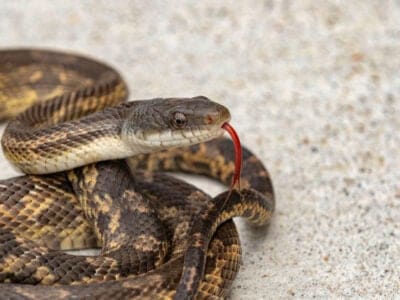
Texas Rat Snake
The Texas rat snake is one of the most common subspecies of the western rat snake in the wild.

Tiger snake
Tiger Snakes can spend nine minutes underwater without returning to the surface to breathe

Tree Snake
Though this snake’s venomous bite isn’t harmful to adults, it can be dangerous to children

Twig Snake
Twig snakes are among the few rear-fanged colubrids whose bite is highly venomous and potentially fatal.
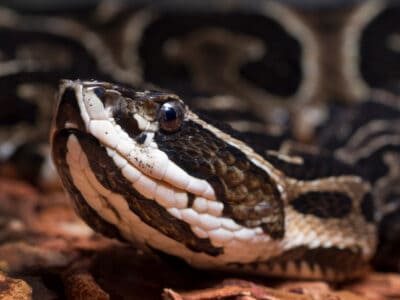
Urutu Snake
The female Urutu snake grows longer and heavier than males of the same species
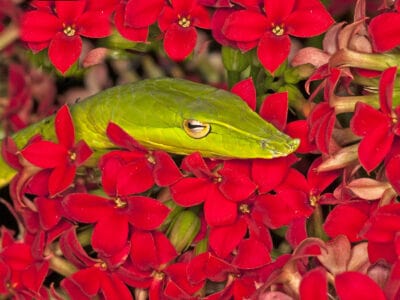
Vine Snake
A slender body and elongated snout give the vine snake a regal look.
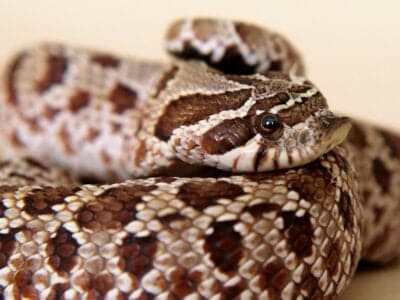
Western Hognose Snake
Primarily solitary, these snakes only communicate with one another during breeding season.

Western Rat Snake
Western rat snakes have special scales on their belly that help them climb up trees.
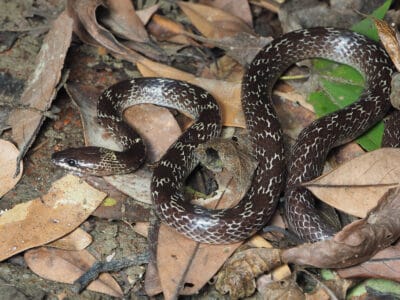
Wolf Snake
Harmless, but with fangs like a wolf.
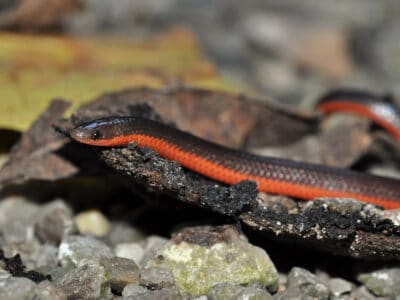
Worm Snake
They emit a bad-smelling liquid if they are picked up!
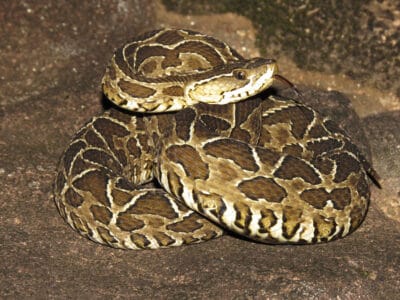
Yarara
Females are much larger than males

Yellow Anaconda
Anacondas take prey much bigger compared to body weight than other snakes.

Zebra Snake
The zebra snake is a black-hooded species of spitting cobra native to several of the southern countries of Africa.
The photo featured at the top of this post is © Artem Onoprienko/Shutterstock.com
Discover the "Monster" Snake 5X Bigger than an Anaconda
Every day A-Z Animals sends out some of the most incredible facts in the world from our free newsletter. Want to discover the 10 most beautiful snakes in the world, a "snake island" where you're never more than 3 feet from danger, or a "monster" snake 5X larger than an anaconda? Then sign up right now and you'll start receiving our daily newsletter absolutely free.
Thank you for reading! Have some feedback for us? Contact the AZ Animals editorial team.



